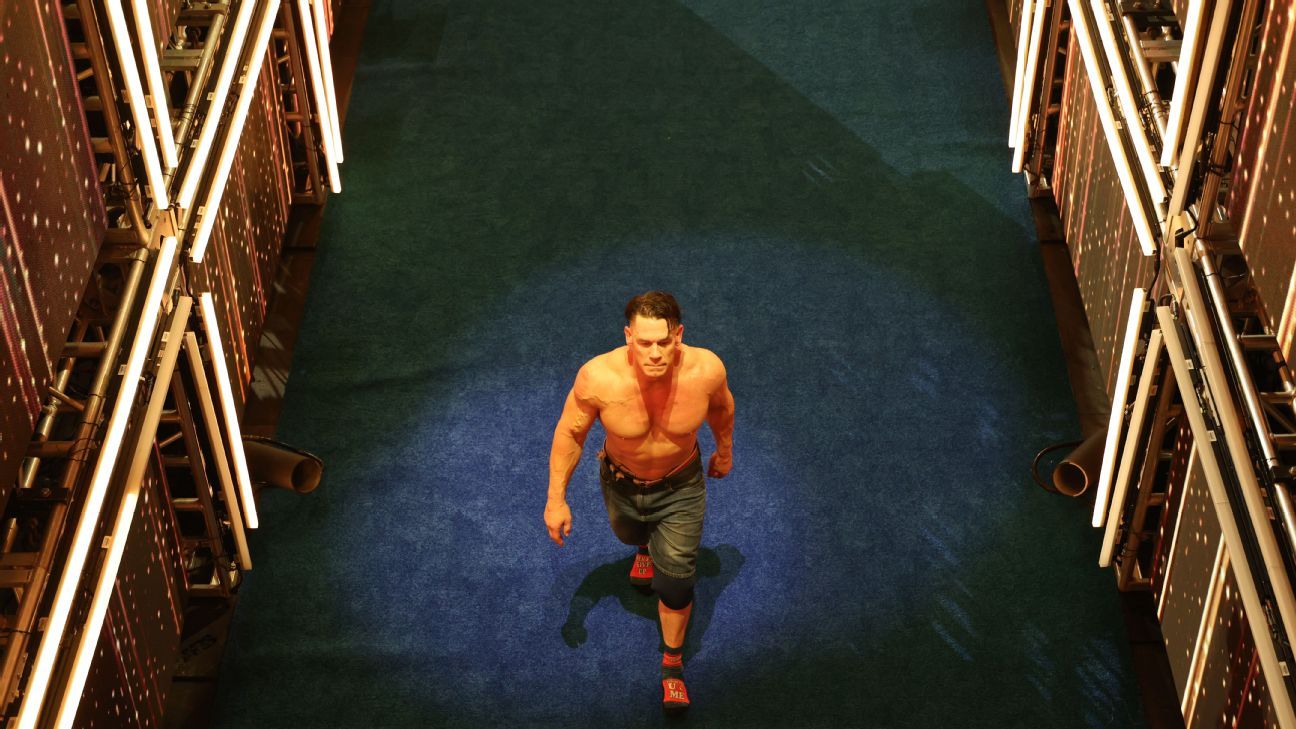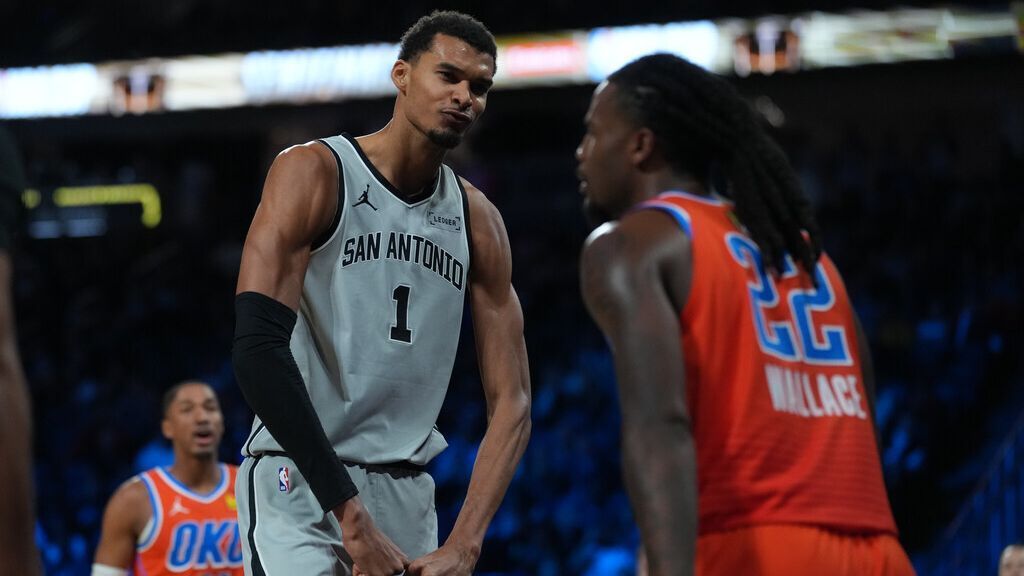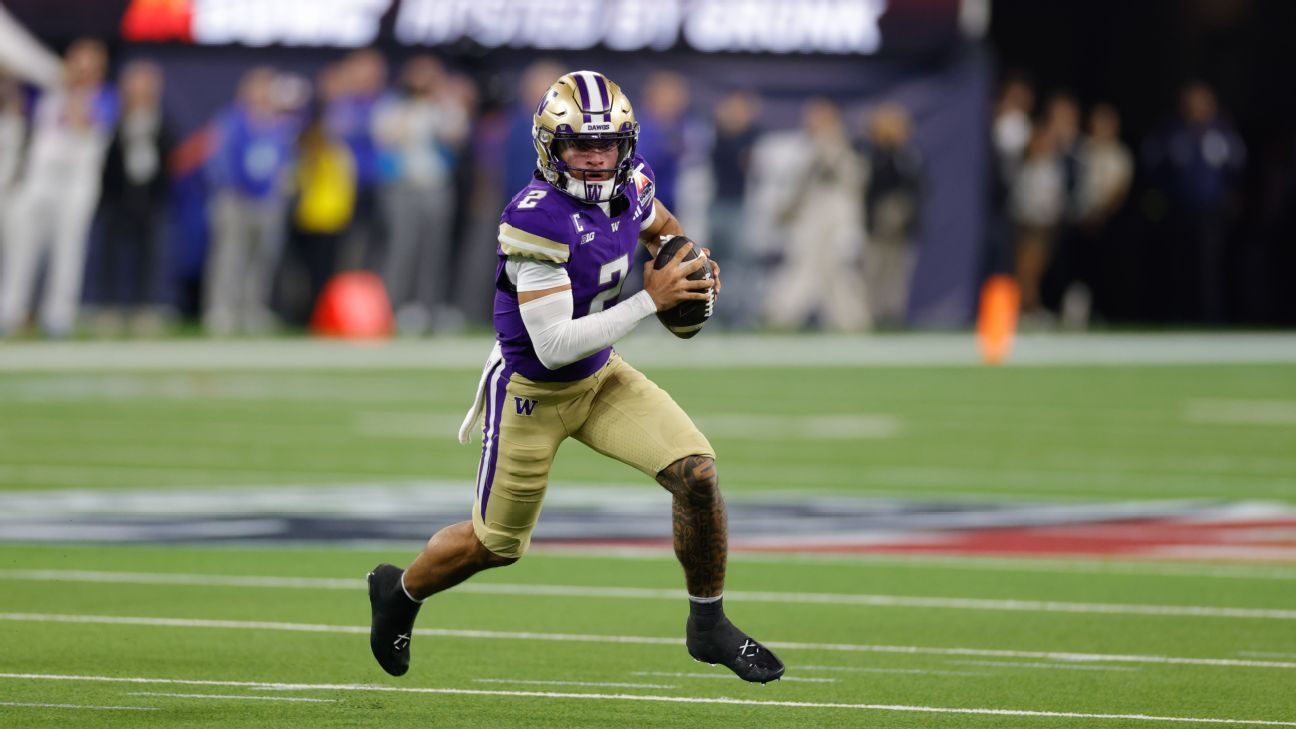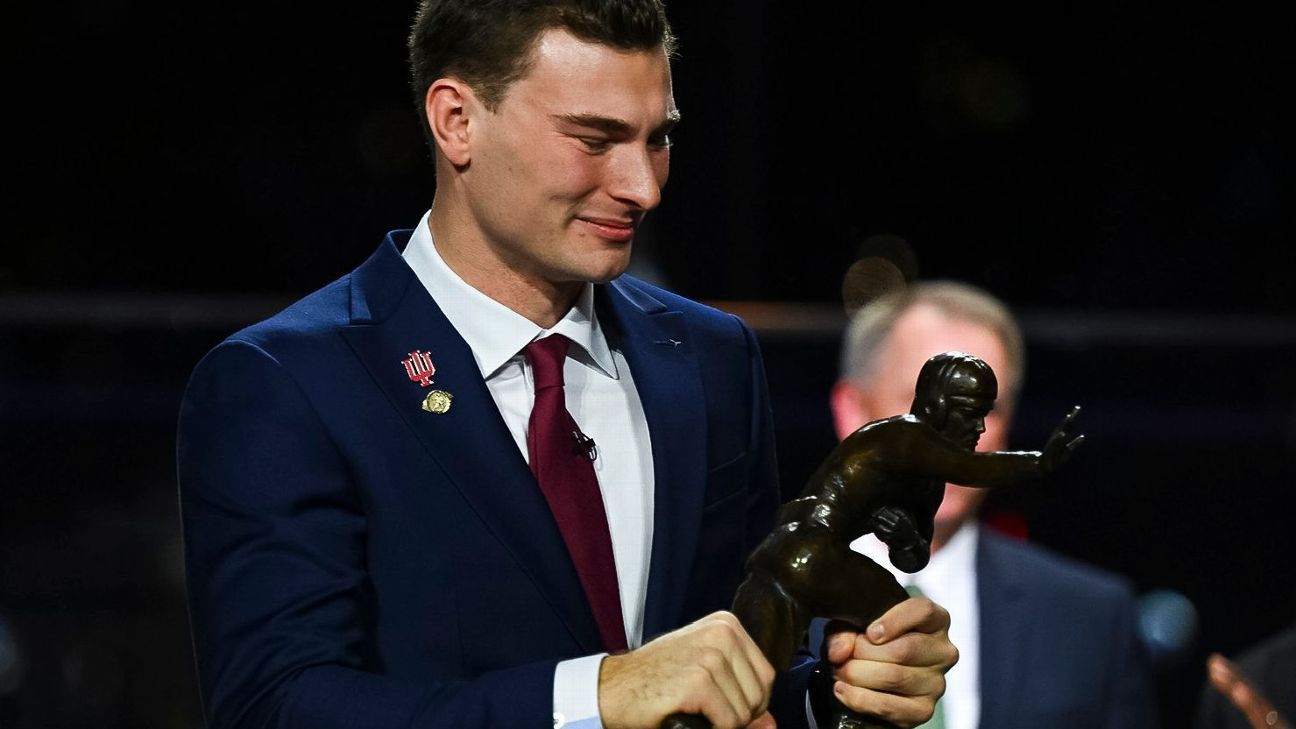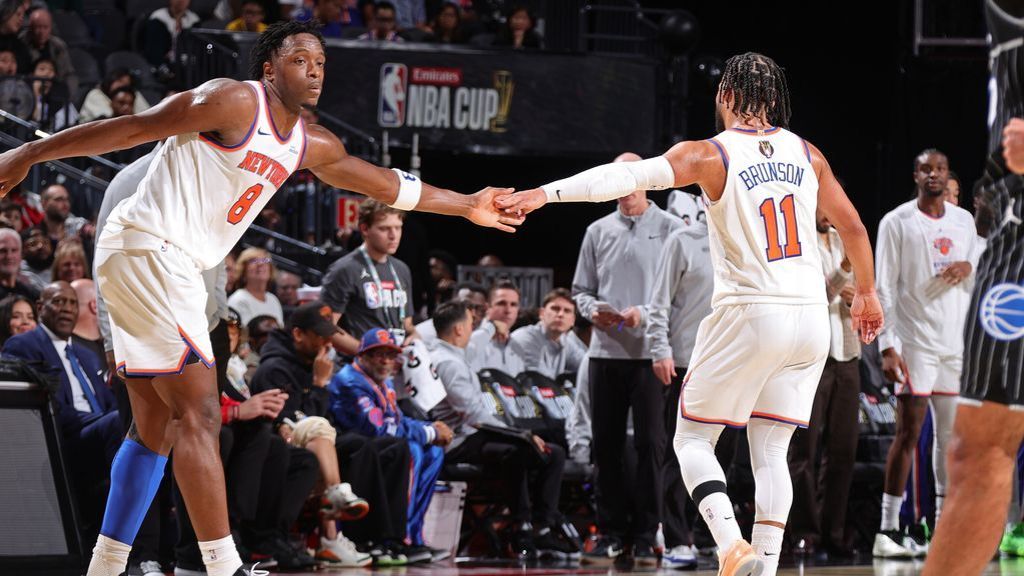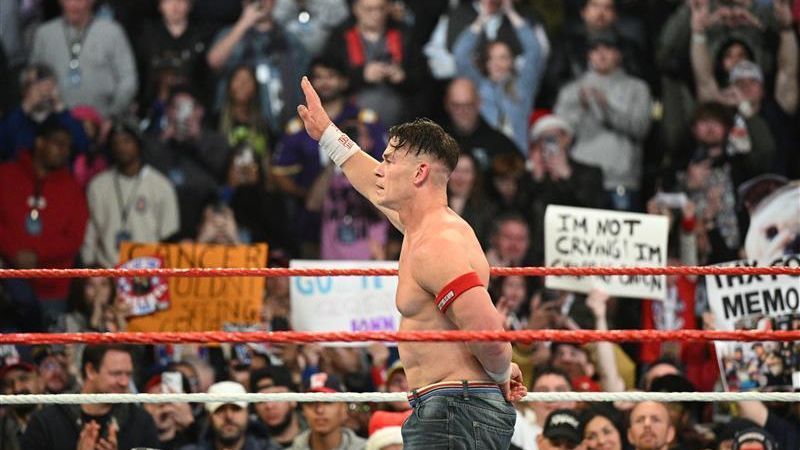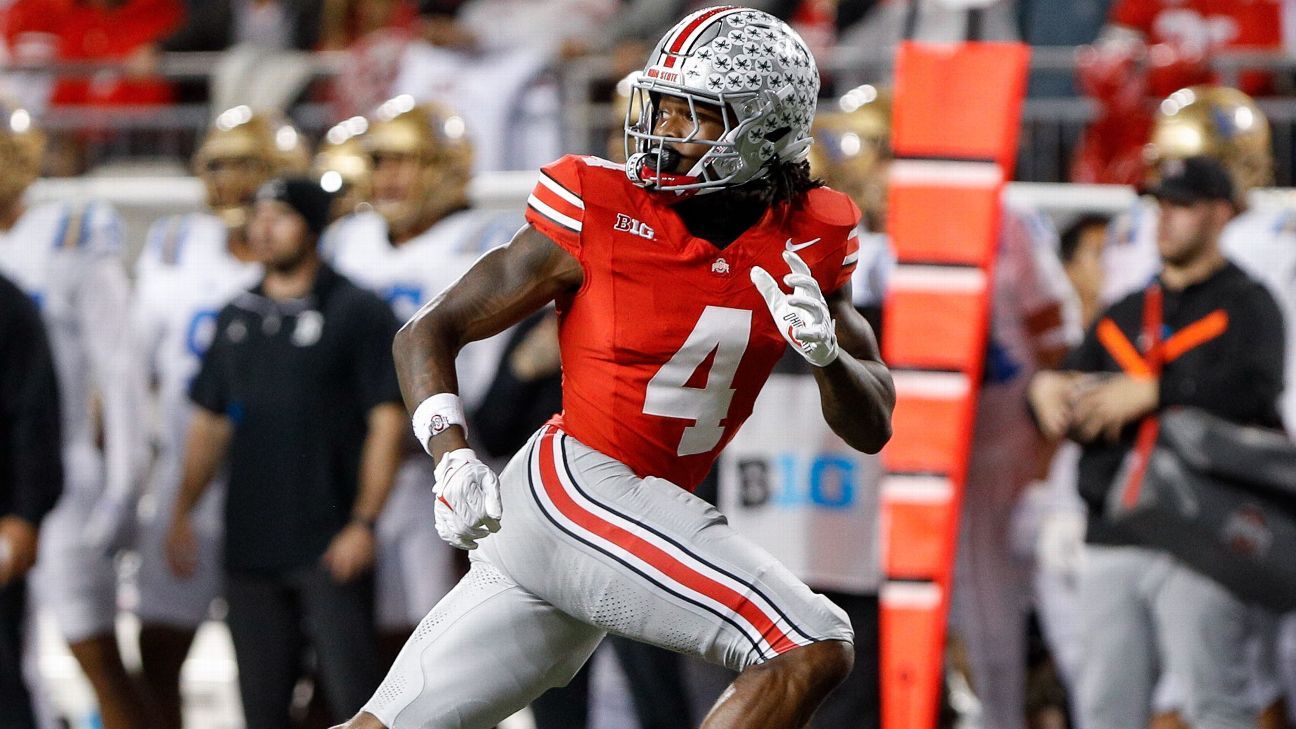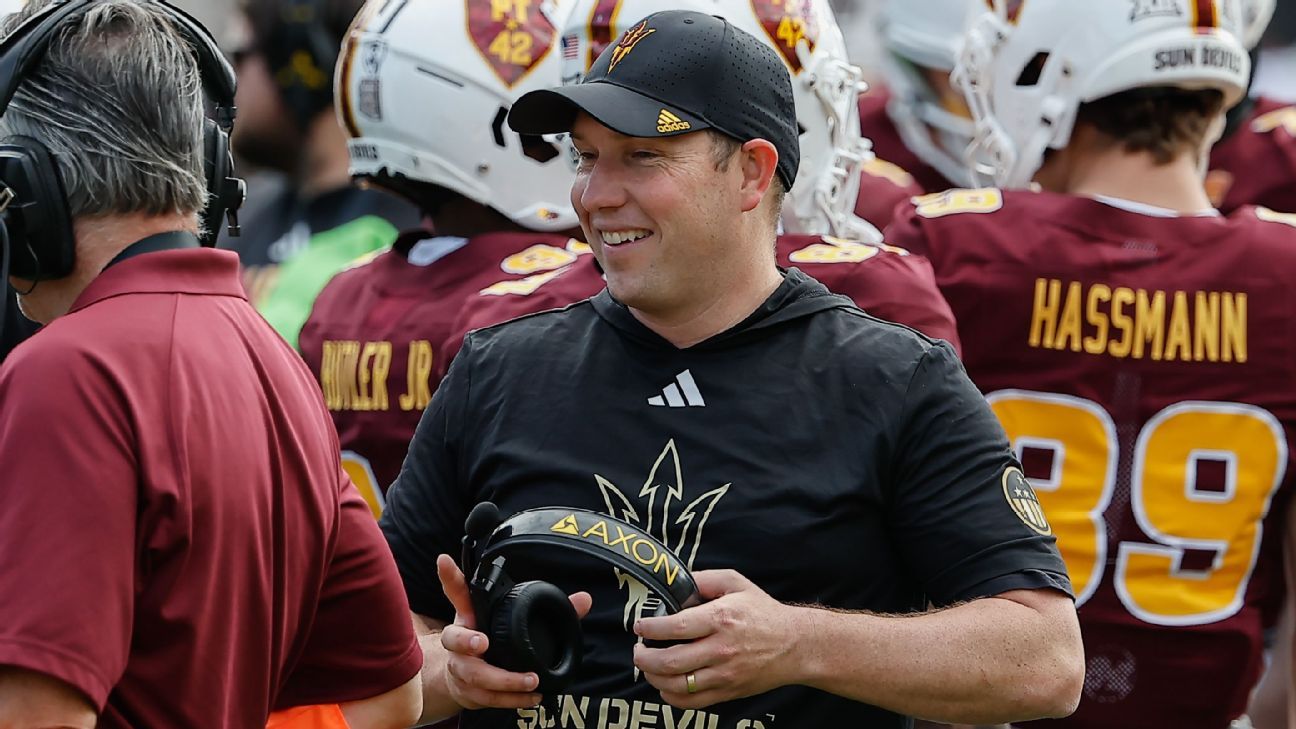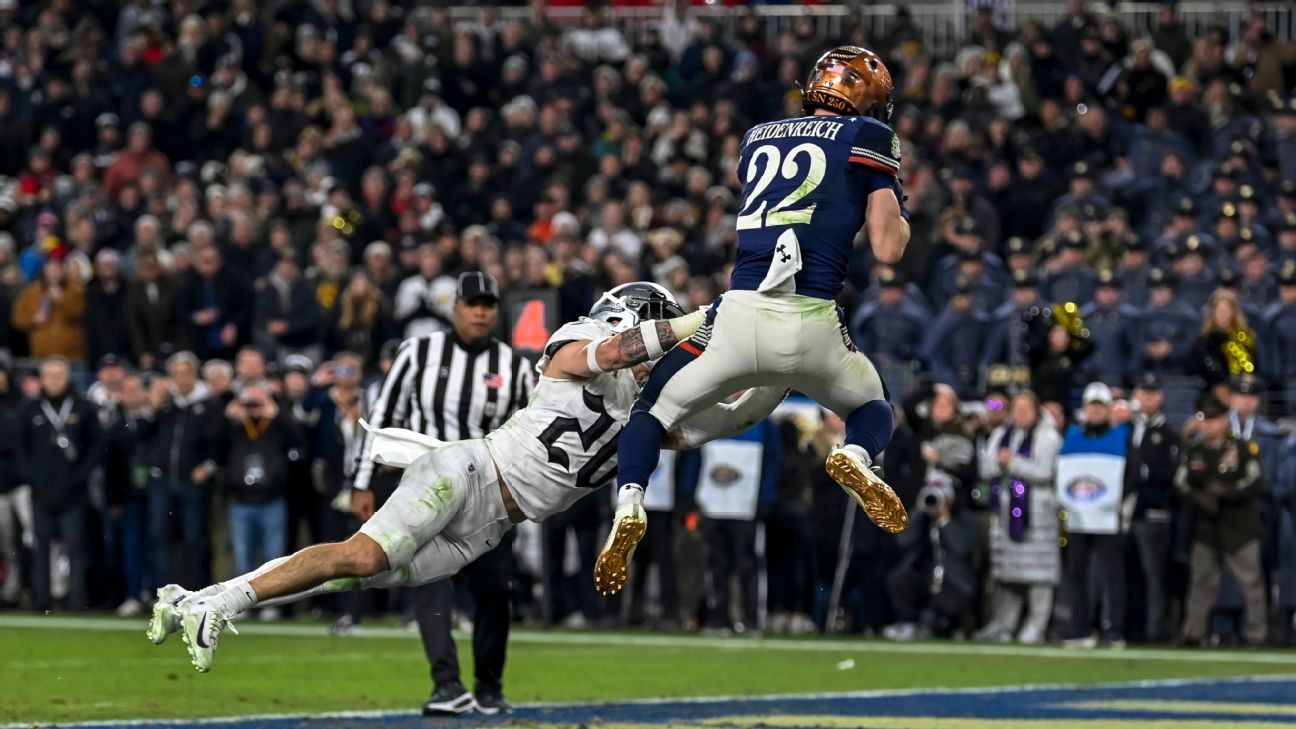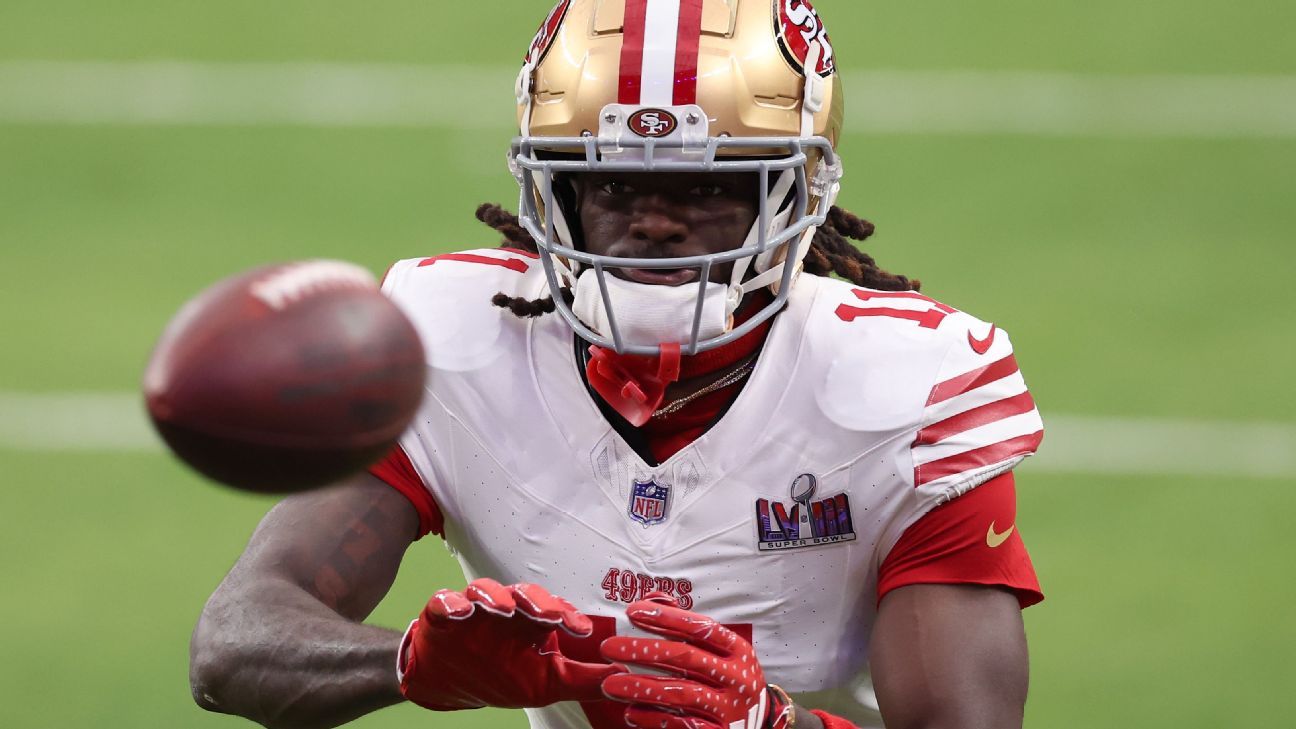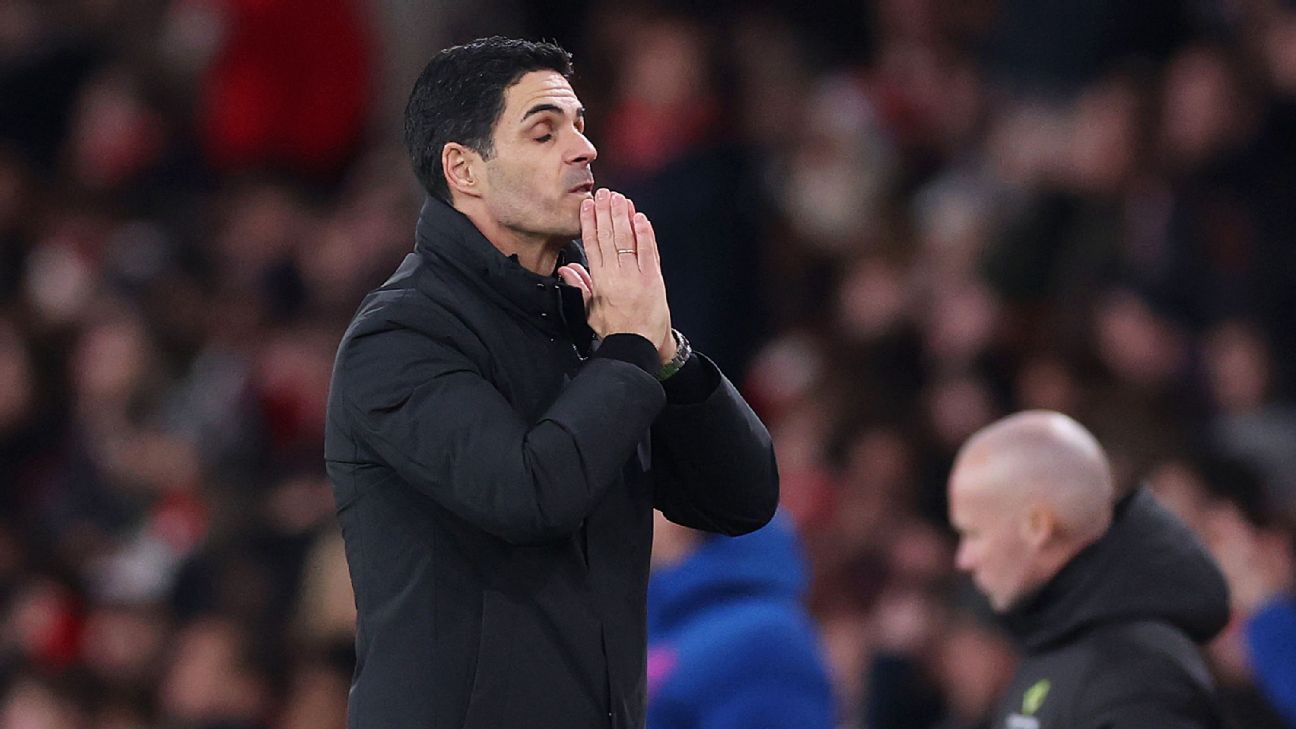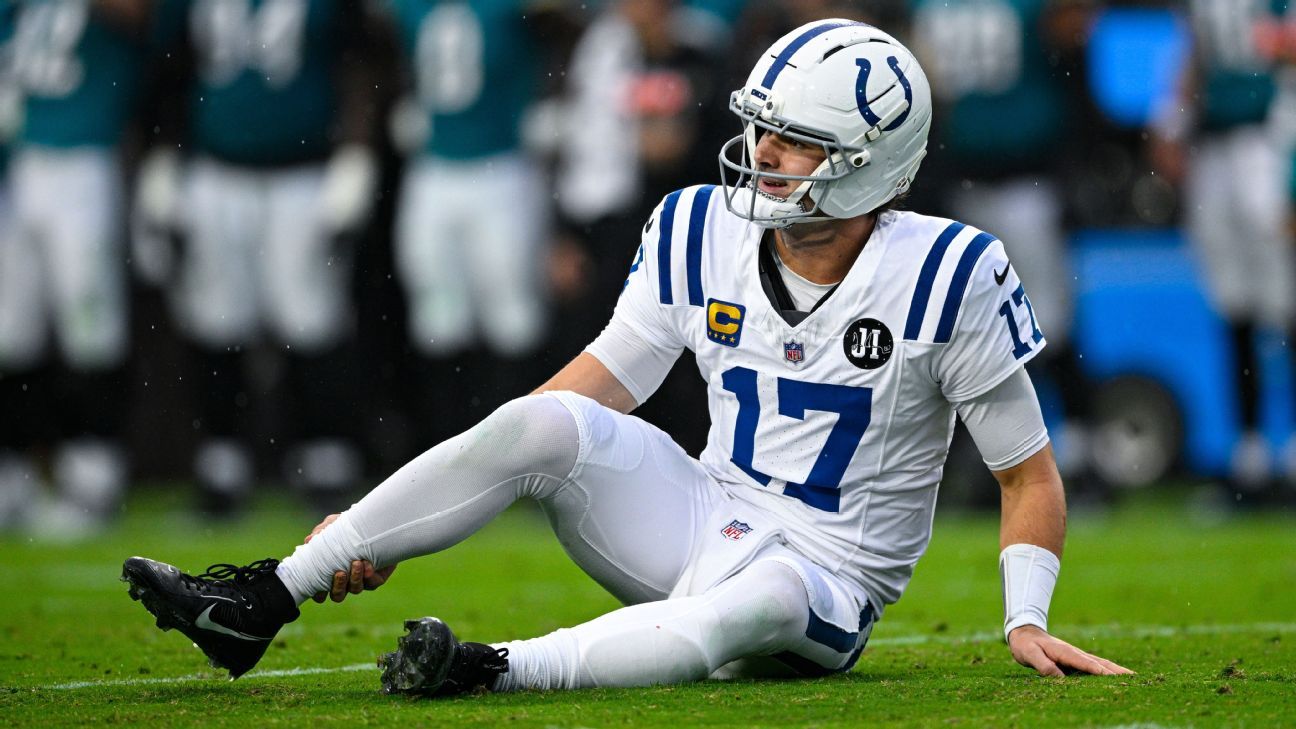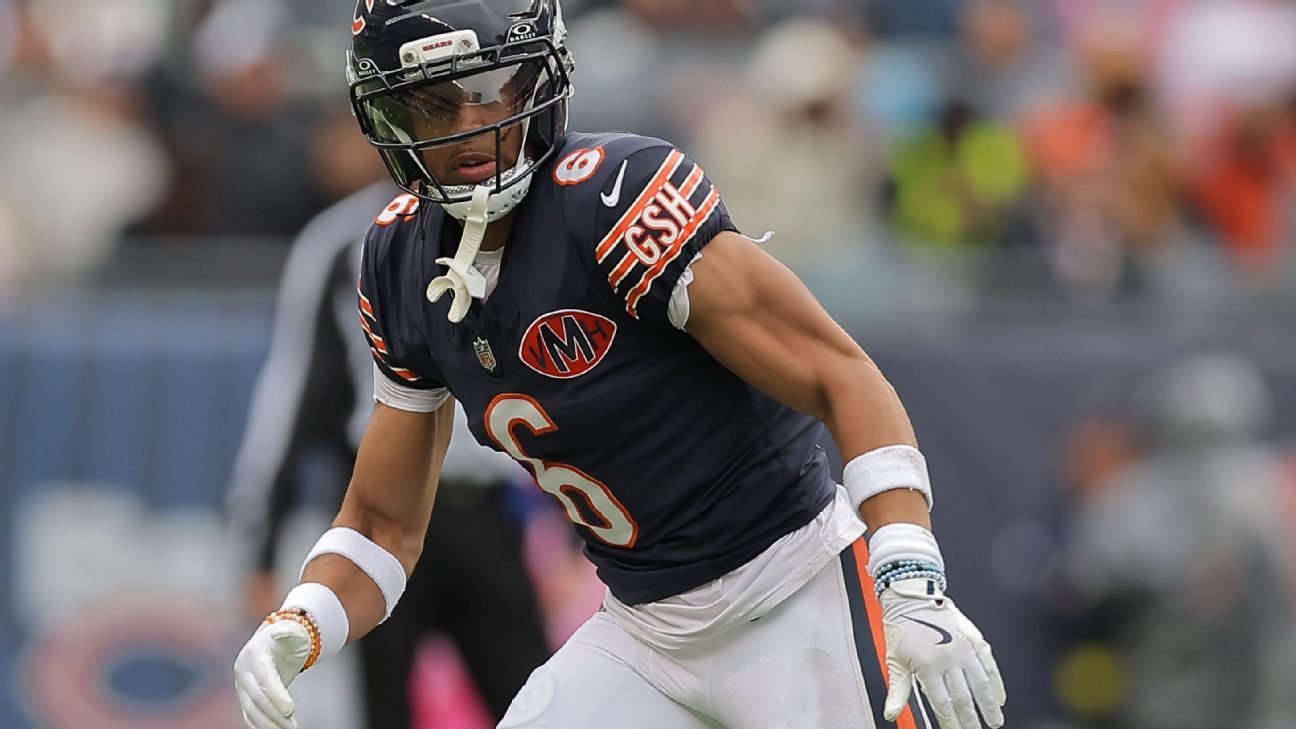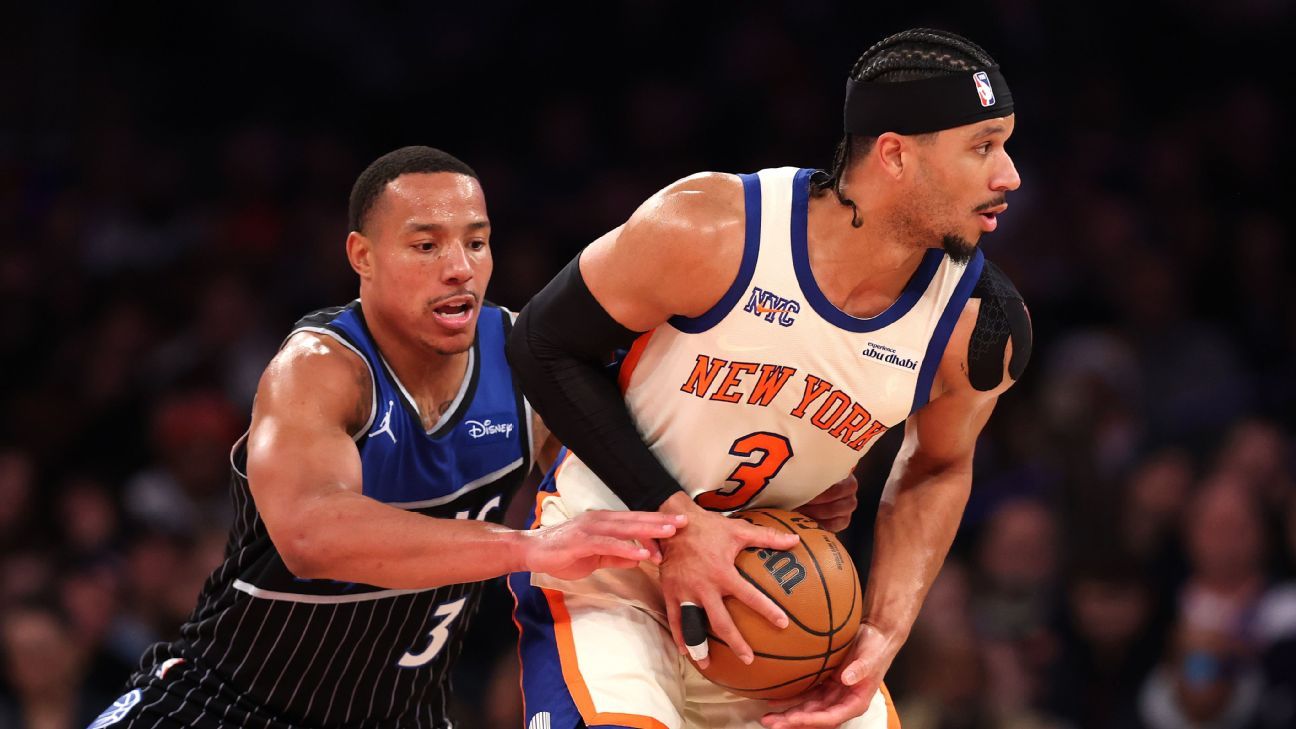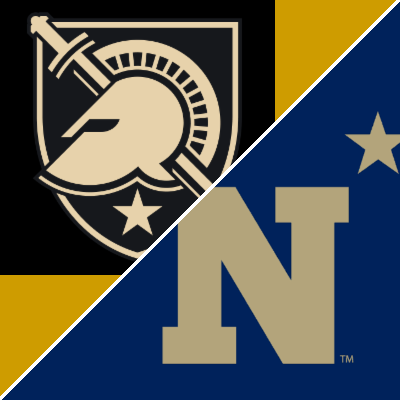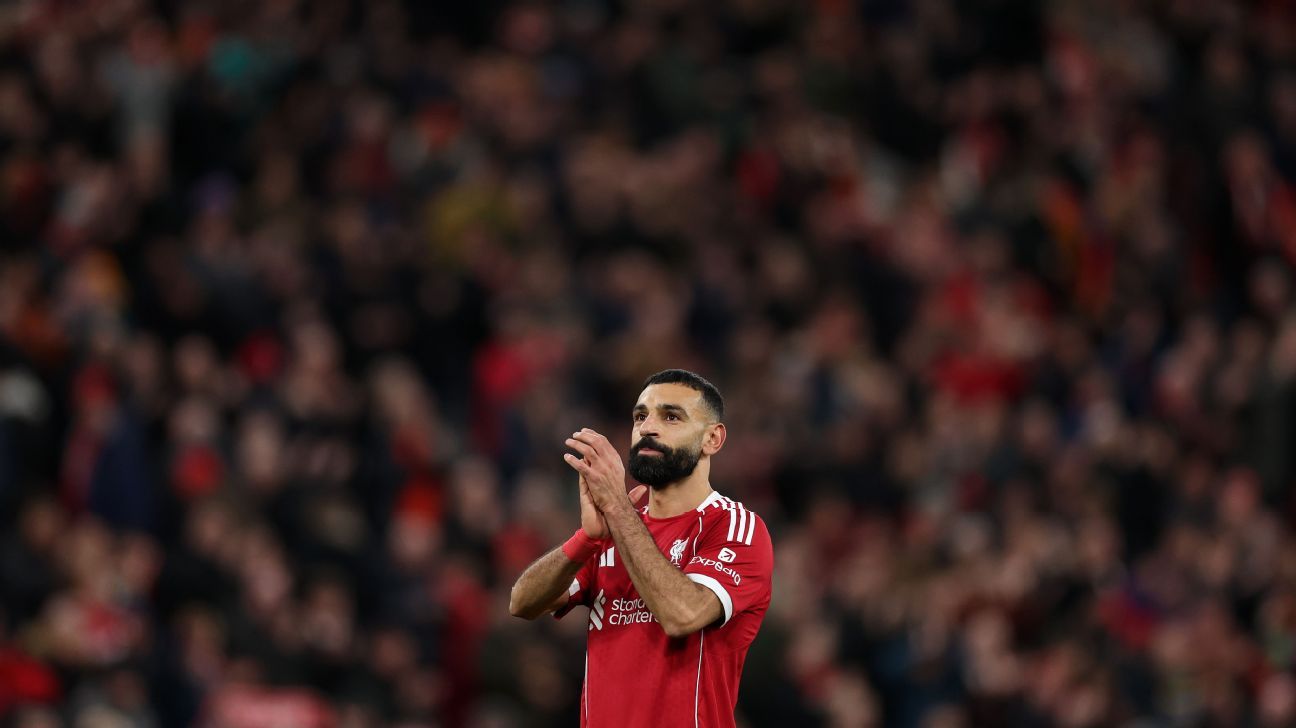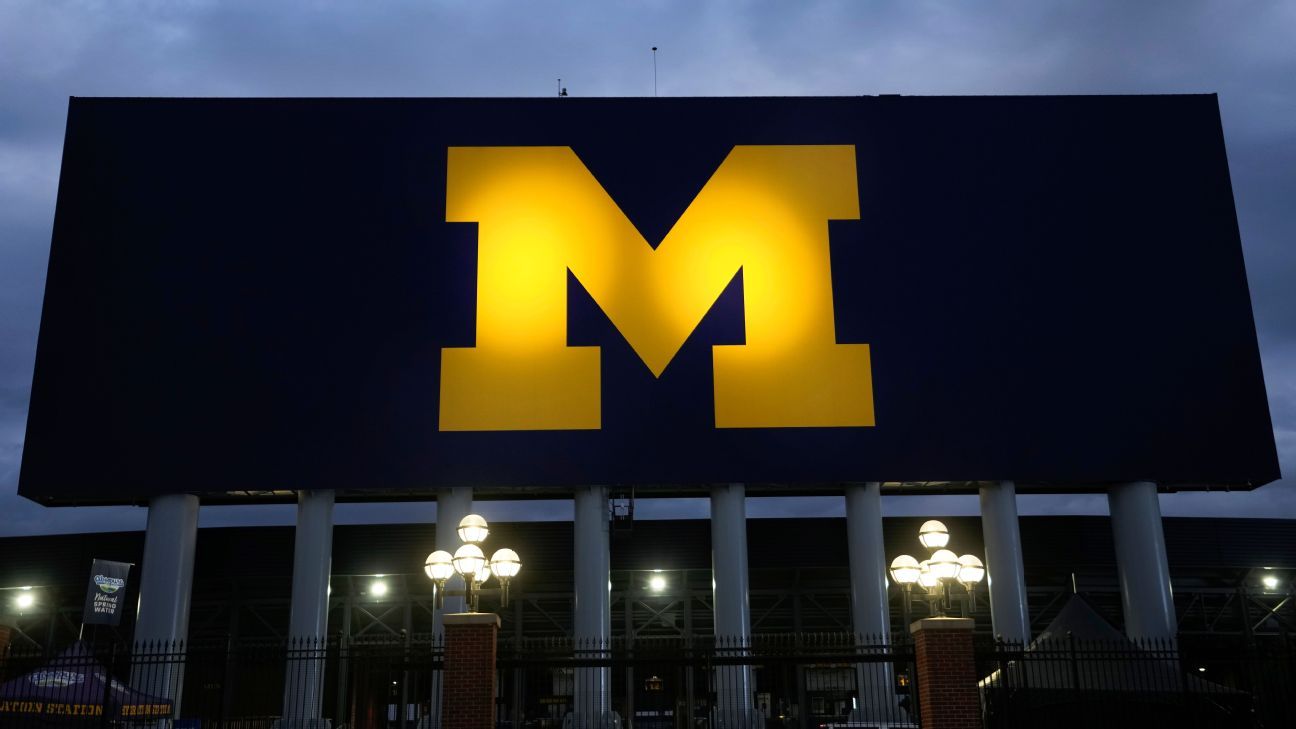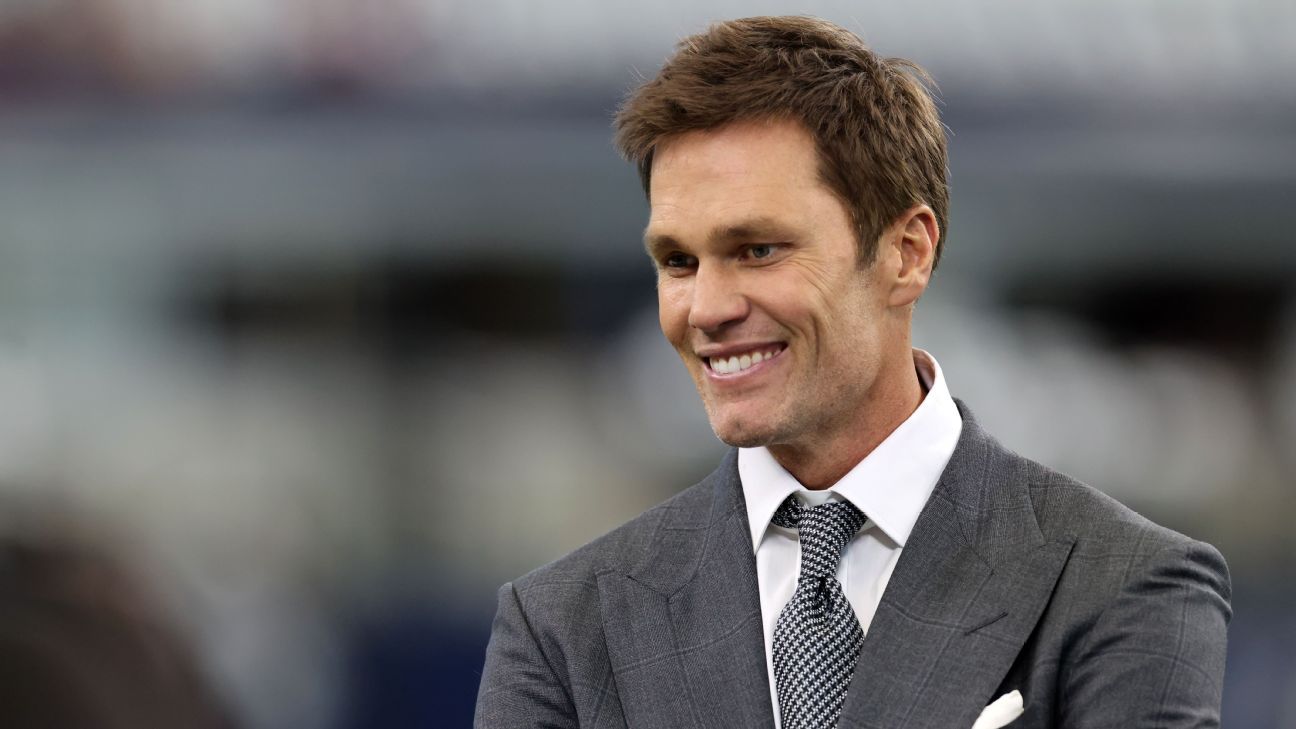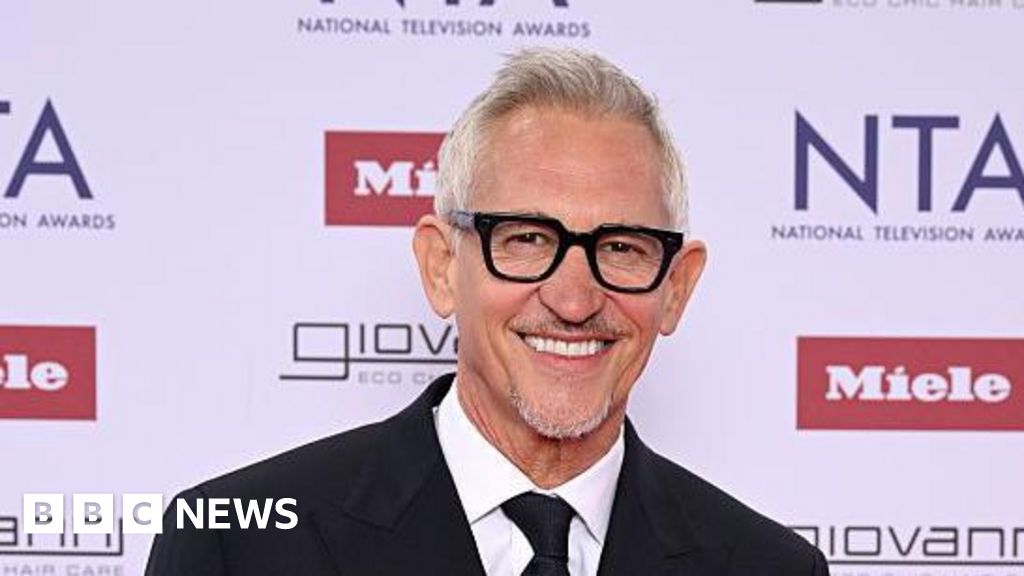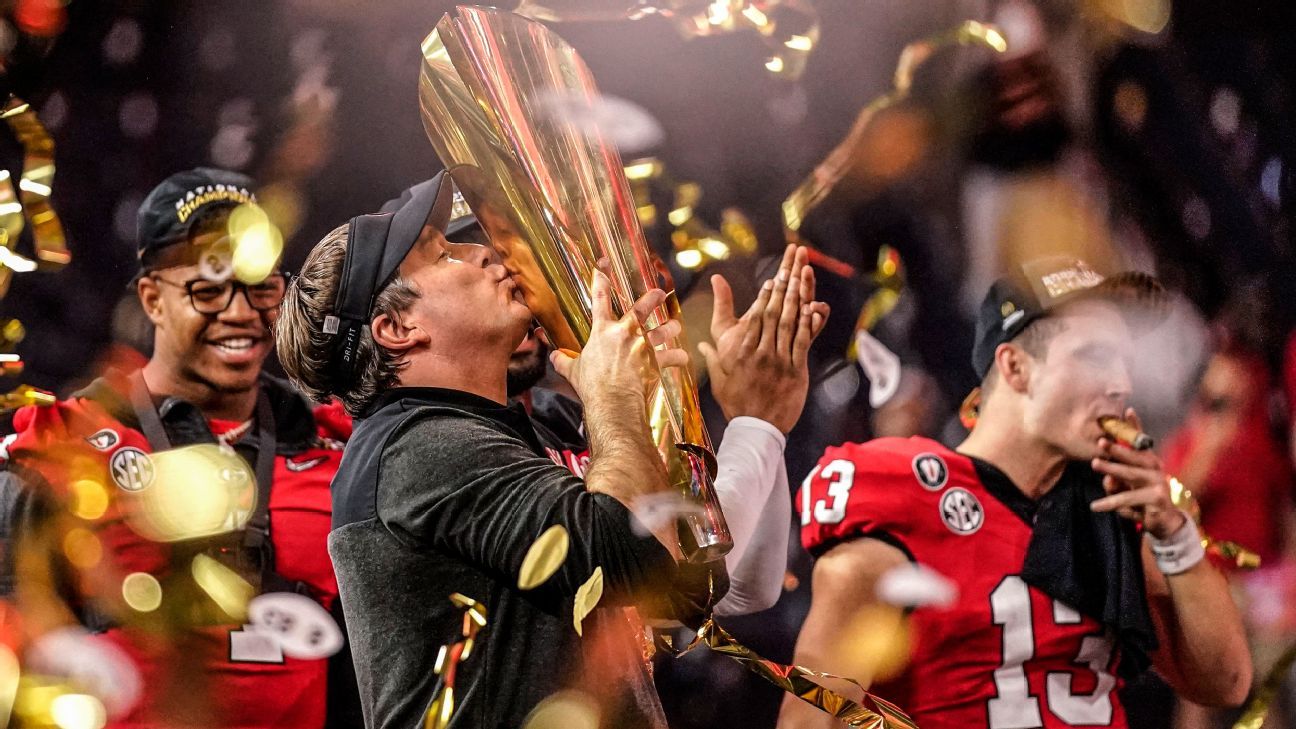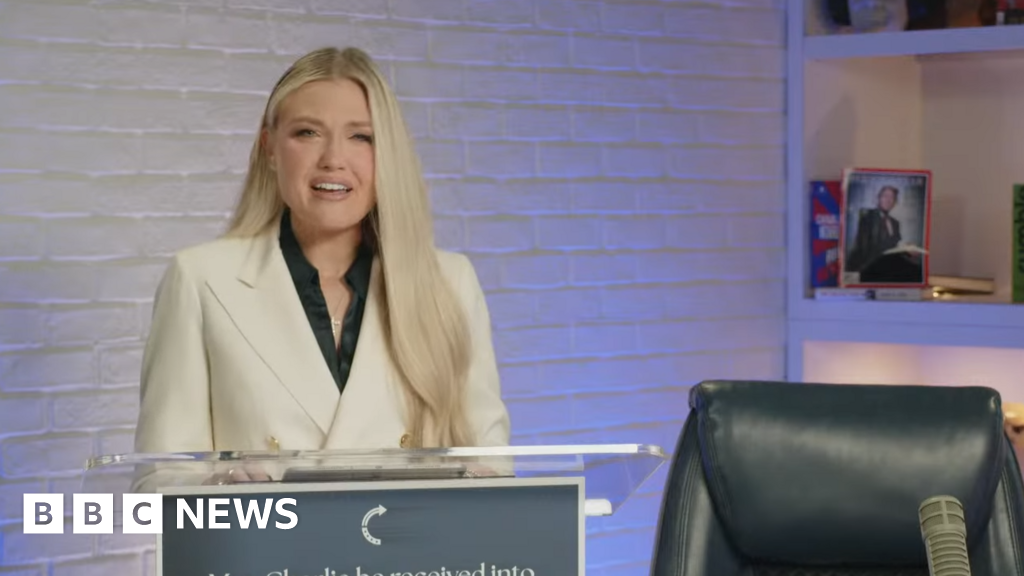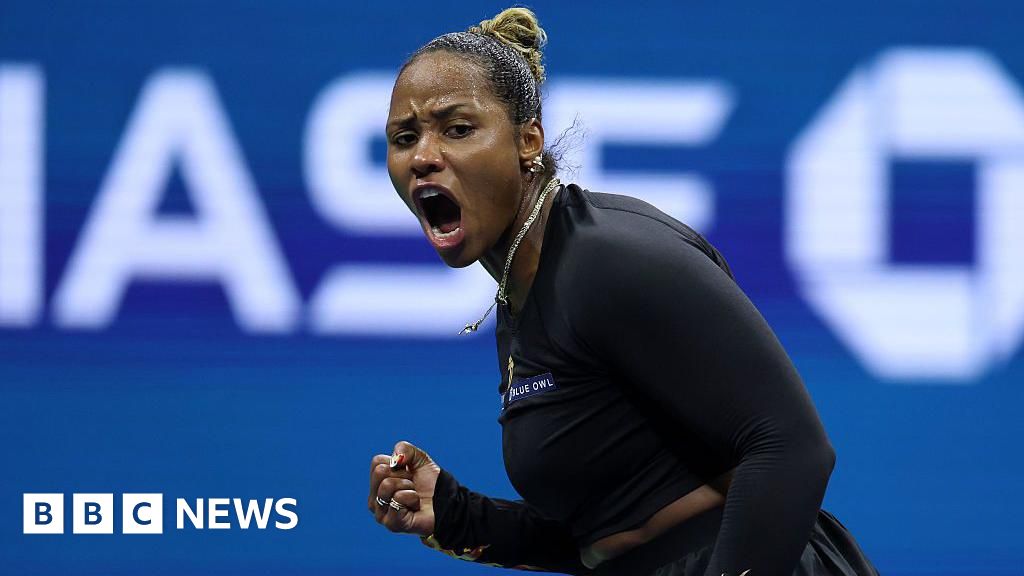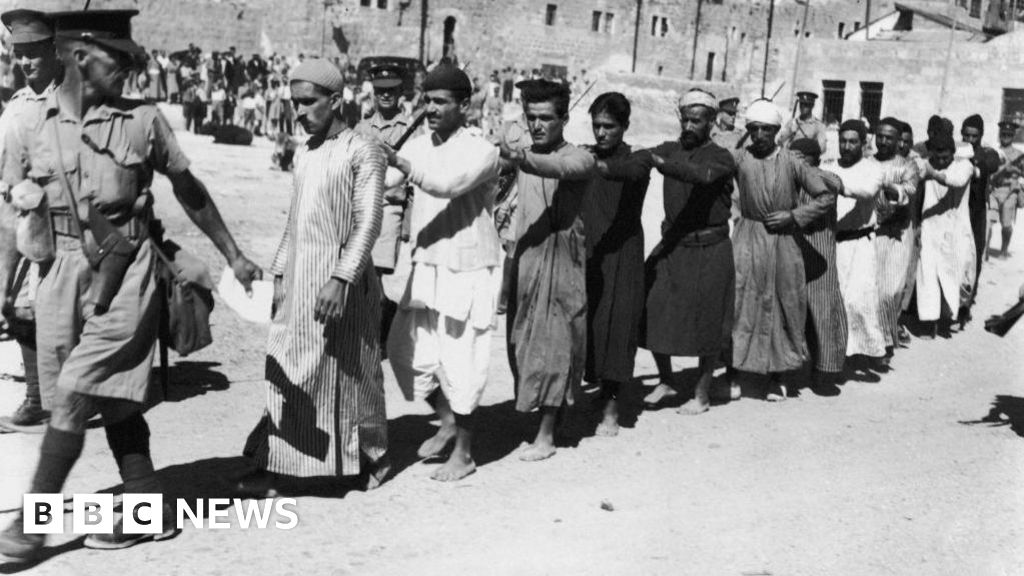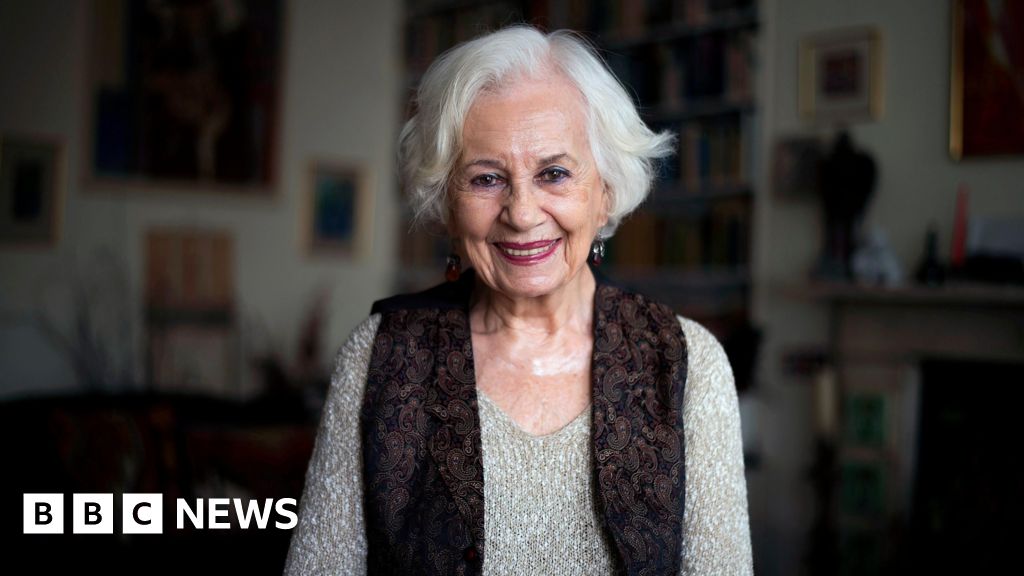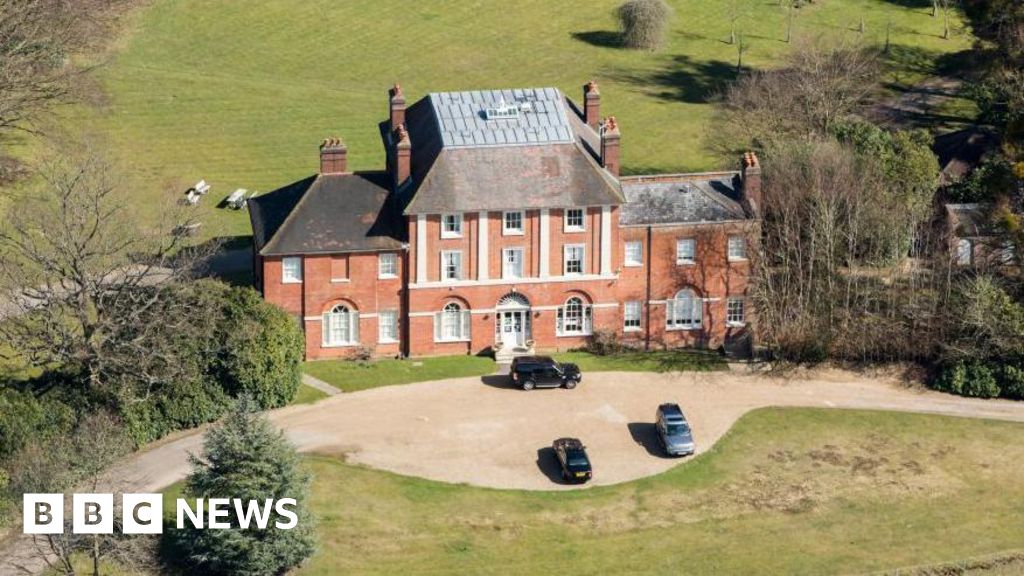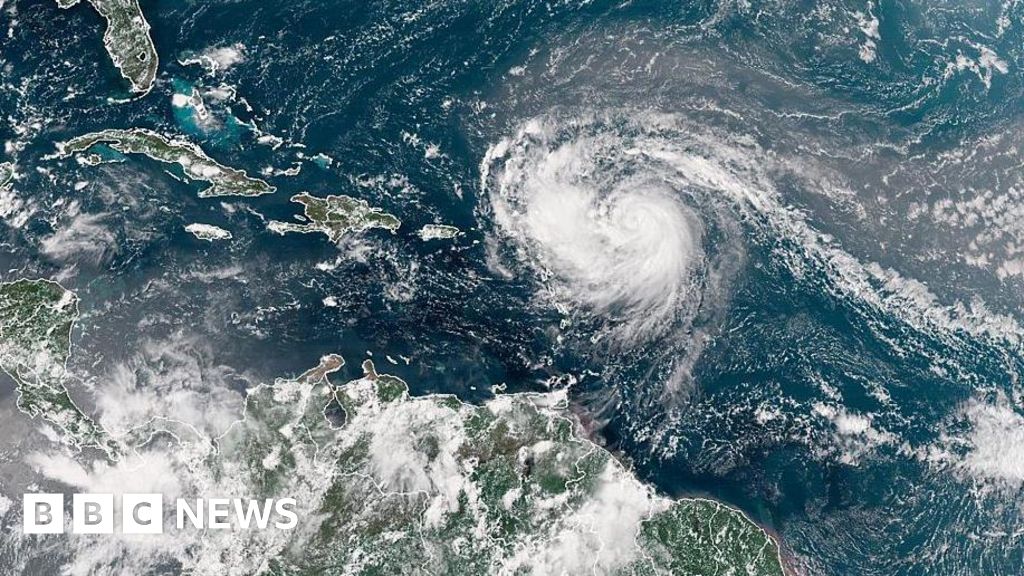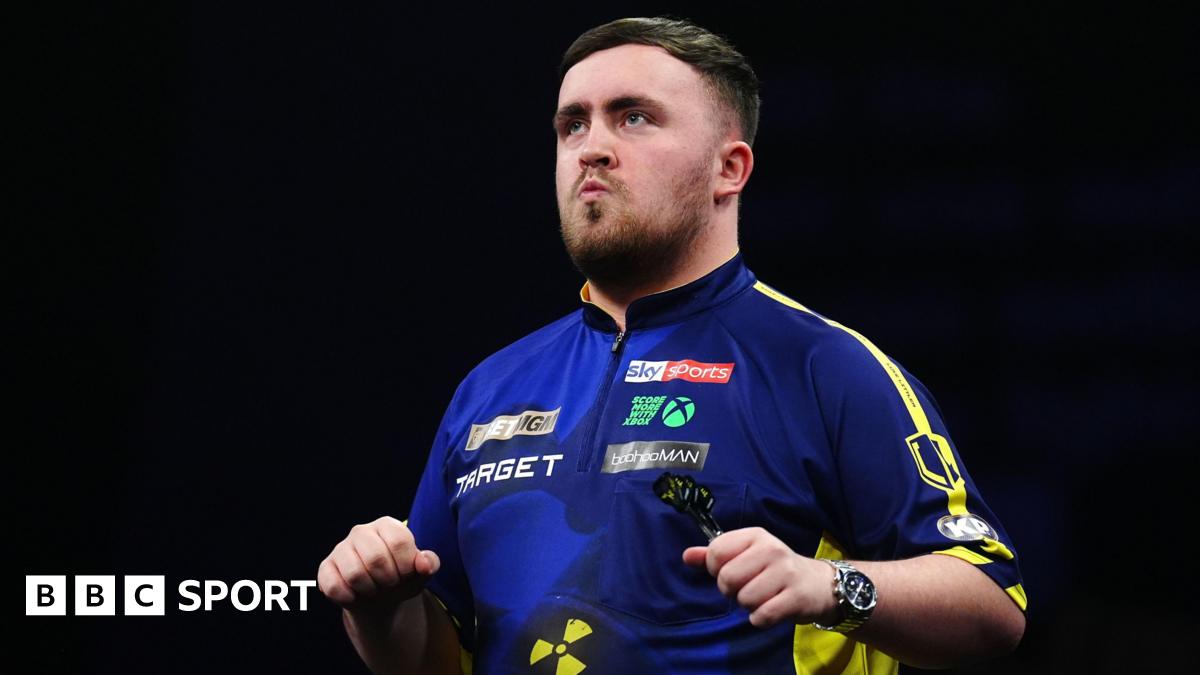Bradford Doolittle

Bradford Doolittle
ESPN Staff Writer
- MLB writer and analyst for ESPN.com
- Former NBA writer and analyst for ESPN.com
- Been with ESPN since 2013
David Schoenfield

David Schoenfield
ESPN Senior Writer
- Covers MLB for ESPN.com
- Former deputy editor of Page 2
- Been with ESPN.com since 1995
Oct 23, 2025, 07:00 AM ET
When the 2025 World Series starts Friday night in Toronto, Shohei Ohtani will step to the plate for the first at-bat of the Fall Classic wearing the Los Angeles Dodgers uniform we've all become accustomed to seeing him in over the past two MLB seasons.
But there is another world, one not as far-fetched as you might think, where Ohtani could instead be toeing the rubber for Game 1 -- and coming up to bat in the bottom of the first inning -- for the Toronto Blue Jays instead.
Similarly, Roki Sasaki has changed Los Angeles' postseason by emerging as the flamethrowing closer the Dodgers desperately needed to solidify a shaky bullpen this month. But in another world, also not that far removed, Sasaki could be playing the part of rookie sensation for the Blue Jays instead of facing them with games on the line.
How close were Ohtani and Sasaki to picking the Blue Jays over the Dodgers as their much-hyped free agent decisions played out? How did the two tense decision days -- one that turned the entire internet into international flight trackers -- go down? How good would the Blue Jays have been the past two seasons with Ohtani on their roster? And what would the Dodgers have done to counter if they had lost out on baseball's two-way superstar?
Let's dig in.
Jump to:
Ohtani timeline | Sasaki timeline | Jays with Ohtani | Dodgers' Plan B?

Timeline of the Ohtani, Blue Jays deal that never happened
The jokes are now everywhere: Hey, Shohei Ohtani is finally getting on a plane to Toronto. The Dodgers actually played in Toronto in April 2024, but we get it: There was that frenzied Friday in December 2023 when everybody thought Ohtani was on a plane headed to Toronto to sign with the Blue Jays.
What happened that day, Friday, Dec. 8? First, a user on a social media site posted that Thursday evening that a private jet -- tail number N616RH -- was scheduled to fly from Southern California to Toronto on Friday morning. Somebody else discovered the same jet had been in Oakland when Ohtani had met with the San Francisco Giants. A baseball writer pointed out that Ohtani's decision to sign with the Angels six years before had come on ... Dec. 8.
It was all adding up. The Dodgers Nation fan site published a report saying Ohtani had chosen the Blue Jays. Then MLB Network reported that Ohtani was traveling to Toronto. With N616RH in the air, fans began assembling at the private terminal at Toronto's Pearson Airport.
But it wasn't Ohtani on the plane. It was "Shark Tank" judge Robert Herjavec. On Saturday, Ohtani posted his decision on Instagram: "I have decided to choose the Dodgers as my next team." The rest is history.

Timeline of the Sasaki, Blue Jays deal that also never happened
Upon announcing he would be coming to the majors from Japan early in the 2024-25 offseason, Roki Sasaki immediately became the most coveted free agent available, thanks to his immense talent and the team-friendly conditions of his contract.
After meeting with several teams, Sasaki's camp revealed that the New York Yankees, New York Mets, Chicago Cubs, Texas Rangers and Giants had all been told they were out of the running -- leaving three suitors as finalists: the San Diego Padres, the Dodgers and, surprisingly, the Blue Jays.
In the final days leading up to the decision, Sasaki reportedly visited Toronto and the Jays suddenly appeared to be a real player in what had previously seemed to be a race between the two NL West teams vying for his services.
The Blue Jays' flames were further fanned when reports came out Jan. 17 that the Padres were also out, meaning Sasaki's decision -- much like Ohtani's an offseason earlier -- would come down to Los Angeles and Toronto. The Blue Jays even made a deal with the Cleveland Guardians taking on outfielder Myles Straw, and the $13.8 million remaining on Straw's contract, to acquire an additional $2 million in international bonus space -- presumably to use on Sasaki.
Then that evening -- just as Ohtani had done 13 months prior -- Sasaki announced via Instagram that he would be joining the Dodgers, and Toronto was left at the doorstep once again.

Simulating the last two seasons with Ohtani in Toronto
There are a lot of choices to make when reimagining baseball history, especially when you're talking about a transaction at the top of the hierarchy such as when Ohtani chose the Dodgers.
Once that domino fell, it set off a chain reaction that worked its way through most if not all of the majors. You can't simply put the domino back upright, push it down the opposite direction and see how things follow.
So we'll make a few choices, run some simulations and see where we are.
![]()
Dodgers: The L.A. part of this is more straightforward. Removing Ohtani from their mix the last two seasons would hurt them, because he produces at a level few other players can approach. But it's not as if the Dodgers would have folded up their checkbook and gone home. They would have reallocated some portion of the funds they allotted for Ohtani to other players (see Dave's possibilities in the next section).
For the sake of coming up with a revised Dodgers baseline, it's better to avoid trying to guess how the Dodgers might have spent the money.
So let's use a standard instead. The Dodgers' competitive balance tax hit for Ohtani, per Cot's Contracts, is estimated at $46 million per season. There's a premium in there because of Ohtani's stature -- it's actually hard to find a player to spend that much on -- so let's say they would have reallocated $40 million in terms of their luxury tax calculation to other resources. If we stick with the old standard of an average win purchased in free agency being valued at $8 million, we can estimate that the production from Dodgers' Plan B player(s) would have been worth about five wins per season over the last two campaigns.
Per Baseball Reference, Ohtani produced 9.2 bWAR in 2024 for his work as a DH and 7.7 in 2025 for his pitching and hitting. So we're going to reduce the Dodgers' baseline by 4.2 wins in 2024 and 2.7 in 2025. My end-of-season simple power rating for L.A. in 2024 was 95.9, so we'll take that down to 91.7. In 2025, I had them at 92.9, so we're down to 90.2. These won't be the precise numbers used in the simulations, as we've got to make sure the distribution of wins across the majors totals up to the 2,430 wins at stake in a big league season, but these numbers are close.
![]()
Blue Jays: The Toronto adjustment is a little more complicated in that we actually know what they did after they failed to land Ohtani. What we don't know is what moves would not have occurred had they signed him, or the contract he ultimately would have gotten from Toronto. Let's start with the financial part.
Luckily, we had Jeff Passan and Alden Gonzalez on the case, so we know that Ohtani reportedly presented other teams, including the Blue Jays, with the same terms he gave to the Dodgers and that Toronto agreed to them. So we can use that same $46 million as Toronto's CBT number on the Jays' balance sheet, though the ramifications for the Jays in that regard are different because of their lower overall payroll.
After Ohtani signed with the Dodgers, the Blue Jays signed three veteran free agent hitters: Isiah Kiner-Falefa (two years, $15 million), Kevin Kiermaier (one year, $10.5 million) and Justin Turner (one year, $13 million). The 2024 payout for those three was a combined $38.5 million, and it would take some additional belt tightening to get to Ohtani's salary. The Jays' Opening Day payroll was about $13 million over the first CBT threshold and $7 million below the second. So they could ax this trio, drop Ohtani into the payroll, and still likely stay under the second threshold, if that was a goal.
Kiner-Falefa, Kiermaier and Turner posted a combined 4.5 bWAR between them, and frankly, reconfiguring the Toronto depth chart to absorb their absences isn't that hard. The difference between their production and Ohtani's is a hefty 4.7 bWAR, so we'll add that to Toronto's 2024 baseline. Alas, the Jays weren't very good in 2024, so adding that figure to their end-of-season power ranking (70.9) takes them up to only 75.6.
Working Ohtani's $46 million onto Toronto's 2025 payroll is more challenging. According to Cot's, Toronto's end-of-season CBT payroll was $28 million over the first threshold and $8 million over the second. Certainly, the Blue Jays would not have signed Anthony Santander if they had Ohtani in hand and, perhaps, knowing Ohtani could also pitch for them in 2025, perhaps they would not have sprung for Max Scherzer.
Even so, because Santander's deal involved so much deferred money, we're still talking about a tax payroll that's something like another $17 million higher even after we drop Scherzer and Santander. But, hey, it's not our money, so let's do it. For the sake of this exercise, we won't have Toronto pursue Sasaki after Ohtani becomes a Blue Jay.
There are other possible consequences that, for now, we'll ignore. First of all, would the Blue Jays have been able to be as aggressive in extending Vladimir Guerrero Jr. to a long-term deal if they knew Ohtani had the DH spot locked up for the next decade? Would George Springer's bounce-back season been harmed by having to spend more time in the field? Worth thinking about.
But we'll stick with the straightforward adjustments. Together, Scherzer (0.2 bWAR) and Santander (minus-1.0) were a net drag on the Blue Jays' bottom line. Replacing them with Ohtani is a huge gain, though we're cheating a bit by not doing more of a playing time redistribution. Scherzer was limited to 85 innings during the season, but Ohtani logged only 47. But Ohtani rolled up 727 plate appearances, dwarfing Santander's 221. In other words, Ohtani would have also usurped at-bats from players such as Nathan Lukes, Addison Barger and Davis Schneider, just to start.
We'll keep it simple and just add Ohtani's 7.7 2025 bWAR to the Blue Jays' bottom line. Toronto's power rating was 90.1 at the end of the season, so we're at an elite 97.8. Now we're getting somewhere.
Let's sim that out and see what happens.
2024: The actual Blue Jays went 74-88 with a run differential that suggested their record was in lockstep with their quality of play. The true talent level of the team was better than that, with or without Ohtani. Toronto won 89 games in 2023 and made the postseason. They're in the World Series this year. Sometimes decent teams have bad seasons -- take heart, Orioles fans! -- and that was Toronto in 2024.
With Ohtani on board in our what-if world, the Blue Jays won the World Series in just three of 10,000 simulations. Maybe having Ohtani's historic production on the roster would have boosted the rest of the squad, but we can't know that for sure. They did make the playoffs about 7% of the time, so it was less hopeless than real life. Still, even with Ohtani, the 2024 Jays would have entered that offseason believing they had work to do.
As for the Dodgers, there is nowhere to go but down since, after all, they won the World Series. In the no-Ohtani world, the Dodgers' reduced baseline got them into the playoffs in 73% of the sims. That seems low, but dropping them to a 90-win team or so puts them on a crowded tier in the big league landscape. The Dodgers still made the World Series 13% of the time and won the title 7% of the time, behind the now-heavily-favored Yankees (24%), Phillies and Astros (both 8%).
Finally, in our 10,000 resimulations of the 2024 season, the Dodgers played the Blue Jays in the World Series four times. Los Angeles won all four showdowns.
2025: One factor is Ohtani's innings workload as it might have been for Toronto. We're leaving his 7.7 bWAR as is, but you have to think the Blue Jays might have been somewhat more aggressive in ramping up his innings count, simply because they lack the ridiculous depth of the Dodgers' staff. Still, adding his two-way punch to the roster and performance of the 2025 Blue Jays gives Toronto easily the top-rated baseline in our resimulated campaign.
That shows up in the end-of-season probabilities and would render Toronto as a solid favorite if it did end up meeting the Ohtani-less Dodgers in the World Series. Because L.A.'s regular season was, for the Dodgers, a bit lackluster, losing Ohtani doesn't really move them down a tier as it did in the 2024 reimagining. But it certainly doesn't help.
We can do a little bit more in direct comparison with the current season. The Blue Jays made the postseason in 92% of the simulations. In the actual postseason, Toronto started off with an 11% shot at winning it all, using this system of power rankings, behind Milwaukee and New York. With Ohtani, they won an MLB-high 15% of the simulations. Meanwhile, the Dodgers made the playoffs 71% of the time, similar to the 2024 resimulation, and won the Series around 6% of the time.
This method isn't entirely fair to the 2025 Dodgers, whose true talent level is well above what they did in the regular season. That would be better reflected if I had used projections rather than the actual final standings. But the Dodgers did what they did, so don't blame me. We're seeing that true talent level in action this October.
As you expect, a Dodgers-Blue Jays World Series cropped up way more often in the 2025 sims -- 277 times, altogether. In those matchups, the Blue Jays went 171-106 (61.7%). This is roughly the polar opposite of most of the Dodgers-favored World Series odds that are circulating right now. In my system, the reversal is almost exact: The Dodgers are winning 60.9% of the sims in most post-LCS analysis.
So if you want to know how different a Dodgers-Blue Jays World Series would look had Shohei been on that plane, that's the bottom line: Exactly the opposite.

Five moves the Dodgers could have made if they didn't land Ohtani
But what if Ohtani had been on that plane? While Brad's simulations are best served by not playing the what-if game, we know L.A. would have done something -- and knowing the Dodgers, likely something big. What might the Dodgers' 2024-25 offseason have looked like without Ohtani? Where might that money have gone?
In our alternate universe, we have to remember how the 2023 season ended for the Dodgers: with the Diamondbacks sweeping the Dodgers in the NLDS after the Dodgers started an injured Clayton Kershaw (who got one out and allowed six runs); started Bobby Miller (who got five outs and allowed three runs); and started Lance Lynn (who had led the majors with 44 home runs allowed, got eight outs and allowed four home runs in the third inning).
The focus was on starting pitching, which is why after signing Ohtani the Dodgers traded for Tyler Glasnow and then signed Yoshinobu Yamamoto. Without Ohtani, however, here are five other moves that would have made sense (all these players were involved in transactions that happened after Dec. 9, 2024):
1. Trade for Dylan Cease
What really happened: The Padres acquired Cease from the Chicago White Sox
One reason the Dodgers signed Ohtani and Yamamoto was they were admittedly getting tired of trading prospects. Until this 2023-24 offseason, they had rarely dipped into the big-money free agency in the Andrew Friedman era (Freddie Freeman and Trevor Bauer had been the only $100 million free agents the Dodgers had signed).
They might have made an exception to trade for Cease. He's the kind of pitcher the Dodgers love, with a big power arm. More importantly, coming off all the Dodgers' injuries in 2023, Cease had made 32 starts in 2021, 32 in 2022 and 33 in 2023. Corbin Burnes was also traded after Ohtani had signed, but Cease had two years of control left versus just one for Burnes. Chris Sale also went from the Boston Red Sox to the Atlanta Braves and went on to win the Cy Young Award, but his proneness to injury would have scared off the Dodgers.
2. Sign Blake Snell -- a year early
What really happened: Snell signed with the Giants for two years, $62 million
Snell was coming off a Cy Young Award with the Padres in 2023, his second, and was looking for a mega-contract. ESPN predicted six years and $150 million; MLB Trade Rumors predicted seven years and $200 million. The Philadelphia Phillies, Mets, Red Sox and Dodgers were considered the favorites to sign him, with many other teams in the mix.
That big offer never arrived, with teams worried about Snell's inconsistency. His free agency lingered deep into spring training until he finally signed with the Giants just 10 days before the start of the season. His deal included an opt-out, which he exercised after a scintillating stretch run with the Giants (1.23 ERA over his final 14 starts). This time, the Dodgers decided they wanted him, and they signed him after the 2024 season.
3. Sign Josh Hader
What really happened: Hader signed with the Houston Astros for five years, $95 million
Might the Dodgers have gone after a reliever? The bullpen had been pretty good in 2023, ranking third in the majors in ERA, with Evan Phillips (2.05 ERA, 24 saves) and Brusdar Graterol (1.20 ERA, seven saves) leading the way. But the Dodgers had also relied on castoffs such as Ryan Brasier, Joe Kelly and Shelby Miller, so you could argue that an elite closer like Hader was a good fit. Plus, as the Dodgers showed in the 2024-25 offseason after spending $72 million on Tanner Scott, they are willing to spend big money on a closer.
4. Sign Jung Hoo Lee
What really happened: Lee signed with Giants for six years, $113 million
Lee was one of the top outfielders available in free agency, a star in Korea who projected as a leadoff hitter with a high average and good defense in center field. The Dodgers' outfield in 2023 included David Peralta, who was 35, and James Outman, who had kind of a fluky good rookie season. The Dodgers did end up signing Teoscar Hernandez to a one-year deal, but when Mookie Betts initially moved to shortstop and Outman predictably floundered, they were playing Jason Heyward and had to trade for Tommy Edman. Lee would have been a fit for center field, although he hasn't been as good as expected with the Giants, who overpaid by some $40 million-$50 million compared with the initial predictions, so maybe the Dodgers dodged a bad signing here.
5. Sign Matt Chapman
What really happened: Chapman signed with Giants for three years, $54 million
Max Muncy was coming off a 36-homer season in 2023, but he had hit .196 in 2022 and .212 in 2023. Plus, there is no Ohtani here, so the Dodgers could have signed Chapman and moved Muncy to the DH role or maybe even to second base, where Muncy had played a lot from 2019 to 2022 and was a position that had been a problem for the Dodgers in 2023 (Miguel Vargas started the most games there, with Betts eventually starting by the end of the season).

